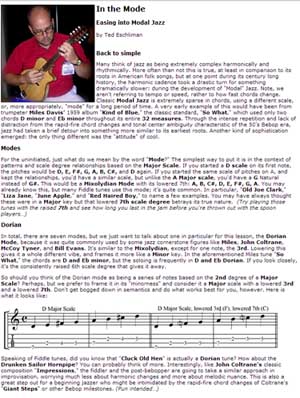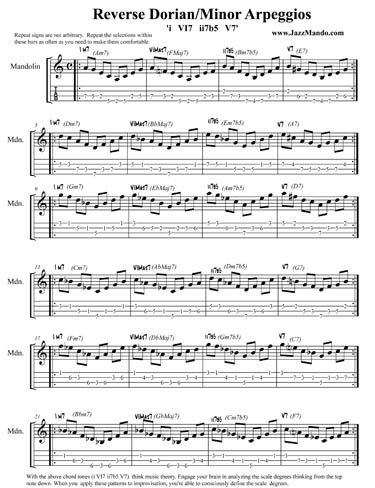« July 2014 |
Main
| September 2014 »
 August 28, 2014 | Pencils for All Musicians
August 28, 2014 | Pencils for All Musicians

If you come from a classically trained background, or played in the school band or orchestra in your youth, the following pencil admonishing will have meaning for you. It's the teacher/conductor nightmare, trying to get students and performers to physically mark places in their music where there might be some special instructions, or in the case of private lessons, bracketing trouble spots that need intense wood shedding.
If you don't have a pencil, you're doomed to repeat the same mistakes.
Even if you learn your music aurally and never use staff or paper, there's immense merit in the notion of tagging the moments of consistent imperfection. Great players don't work on what they do well, they woodshed their mistakes. To perfection!
Driving the point home is this parody. Enjoy!
Video Link: Pencils for All Musicians
Good players practice until they get every note right...
Great players practice until they can't get it wrong.
Further:
Deliberate Practice
The Regressive Method (Learning it backwards...)
Drilling for tone
Keeping it honest: metronomes
Posted by Ted at 9:23 AM
 August 21, 2014 | Easing into Modal Jazz
August 21, 2014 | Easing into Modal Jazz
In the December 2008 issue of MandolinSessions.com, we took a look at a kind of throw-back in jazz history back in the late 50's. It was elegant in it's simplicity, and a kind of reaction to the explosion of speed and harmonic intensity. It was the birth of the "Cool."
From the article:
Many think of jazz as being extremely complex harmonically and rhythmically. More often than not this is true, at least in comparison to its roots in American folk songs, but at one point during its century long history, the harmonic cadence took a drastic turn for something dramatically slower: during the development of "Modal" Jazz. Note, we aren't referring to tempo or speed, rather to how fast chords change. Classic Modal Jazz is extremely sparse in chords, using a different scale, or, more appropriately, "mode" for a long period of time. A very early example of this would have been from trumpeter Miles Davis' 1959 album "Kind of Blue," the classic standard, "So What," which used only two chords D minor and Eb minor throughout its entire 32 measures. Through the intense repetition and lack of distraction from the rapid-fire chord changes and tonal center ambiguity characteristic of the 50's Bebop era, jazz had taken a brief detour into something more similar to its earliest roots. Another kind of sophistication emerged: the only thing different was the "attitude" of cool.
Read more: In the Mode; Easing into Modal Jazz

Further:
Animated Sheet Music; So What
Minor 7th chord streams. So What?
Vamps. Minor modal
Reverse Dorian/Minor Arpeggios
Reviewing Scurry Dominants
Posted by Ted at 9:33 AM
 August 14, 2014 | How to Adjust Your Mandolin Action
August 14, 2014 | How to Adjust Your Mandolin Action

Many like to change out our own automobile oil, stain our decks, and engage in untold chores to make life better about the house. The rest of us like to hire it out and depend on the local grease monkey or handyman to do it for us.
When it comes to mandolin tweaks, adjusting the instrument for minor action enhancements, there are a limited number of easy do-it-yourself fixes out there. We shy away from the more major adjustments (especially that involve cutting), leaving those for a professional tech. Some are handy with wood and tools, and even if you don't do it yourself, it's good to know the principles behind proper instrument adjustment. You should at least know what CAN go wrong on an instrument.
The following Brad Laird video may be elementary for most readers, but a good review never hurts. It's always good to see it played out on screen.
Video Link: How to Adjust Your Mandolin Action
Posted by Ted at 9:34 AM
 August 7, 2014 | Reverse Dorian/Minor Arpeggios
August 7, 2014 | Reverse Dorian/Minor Arpeggios
It's been a two-month hiatus, but we wanted to get in our final of "Reverse" FFcP entry before the time got away from us. Recall, we were looking at escaping the reliance of always starting drills with the root and always going up. We did scales in both Major and Dorian/Minor, and we did one on Major FFcP Arpeggios. It's time to finish the series with the Arpeggios in the Dorian/Minor mode.
Recall, we don't like to get trapped thinking the three forms of minor, Natural, Harmonic, and Melodic. We feel they are esoteric. It's more important to spend time on the Dorian (lowered 7th) mode when you're playing jazz, arguably with folk genres, too.
Still, you don't want to get completely away from that leading tone (raised 7th). Its harmonic pull cannot be denied, so we've include it in the exercise, thus the hybrid title.
As we've said before, get these into fingers and ears, and while you're at it, started thinking how the linear relationship of line flows with the vertical (chord) structure. We've included the chords for this reason.
Download free PDF: Reverse Dorian/Minor FFcP Arpeggios

Make sure you have all four exercise printed. See links below.
Further:
Reverse Major FFcP Scales
Reverse Major FFcP Arpeggios
Reverse Dorian/Minor FFcP scales
Dorian/Minor FFcP Studies
The esoteric Minor Scale
Posted by Ted at 4:07 PM

Disclaimer: In the 'Information Age' of the 21st Century,
any fool with a computer, a modem, and an idea can
become a self-professed 'expert." This site does not
come equipped with 'discernment.'
|



